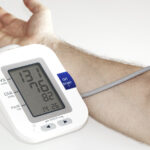High blood pressure, or hypertension, is often called the “silent killer” because it usually has no symptoms but can lead to serious health issues like heart disease and stroke. Monitoring your blood pressure regularly is key to managing your cardiovascular health. While traditional in-clinic readings offer a quick snapshot, they may not always provide a complete picture. This is where ambulatory blood pressure monitoring, also known as ABPM, comes into play. This non-invasive and hassle-free method tracks your 24 Hour Blood Pressure Monitoring Service, offering a more accurate and comprehensive view.
What Is Ambulatory Blood Pressure Monitoring
Ambulatory blood pressure monitoring is a technique used to measure blood pressure at regular intervals throughout the day and night while you go about your normal routine. A small, portable device is attached to your body and typically worn on your belt or shoulder with a cuff around your upper arm. The device records your blood pressure every 15 to 30 minutes during the day and every 30 to 60 minutes at night.
This approach provides valuable insights into how your blood pressure behaves outside the clinical setting. It helps detect issues like white-coat hypertension, which occurs when blood pressure readings are higher in a medical office but normal at home, or masked hypertension, where readings are normal at the clinic but elevated in everyday life.
Why Choose Ambulatory Blood Pressure Monitoring
ABPM has several key advantages that make it a preferred option for both patients and healthcare providers. First, it is non-invasive and easy to use. You can carry on with your normal activities while the monitor does all the work in the background. Second, it gives a more accurate representation of your blood pressure, avoiding the stress-related spikes that often happen during a clinic visit.
Another important benefit is the ability to measure nighttime blood pressure. Blood pressure naturally dips while you sleep, and a lack of this drop, known as “non-dipping,” can be a sign of increased cardiovascular risk. ABPM helps detect this pattern, providing critical information that might not show up during routine daytime checks.
How the Process Works
The process is simple and straightforward. During your appointment, a healthcare provider will fit you with the ambulatory monitor and explain how it works. You will be instructed to wear the monitor continuously for 24 hours, including while sleeping. It is important to keep your arm still and relaxed during each reading for accurate results.
Throughout the day, the monitor will inflate and record your blood pressure at pre-set intervals. You may be asked to keep a diary to note activities, symptoms, or medications during the monitoring period. This additional context helps in interpreting the results.
After 24 hours, you return the device so the data can be downloaded and analyzed. The readings provide a detailed blood pressure profile, highlighting any patterns or abnormalities that might need further attention.
Who Should Consider ABPM
Ambulatory blood pressure monitoring is especially useful for people who have inconsistent or borderline blood pressure readings. It is often recommended for individuals who experience suspected white-coat or masked hypertension. It can also benefit people already on medication, allowing doctors to evaluate how well the treatment is working throughout the day and night.
This method is also valuable for diagnosing resistant hypertension, which is when blood pressure remains high despite the use of multiple medications. In such cases, ABPM helps determine whether the elevated readings are genuine or influenced by situational factors.
Tips for a Smooth Monitoring Experience
To ensure accurate and comfortable monitoring, follow a few simple guidelines. Wear loose-fitting clothing that allows the cuff to inflate without restriction. Try to keep your arm still during measurements and avoid sudden or vigorous movements.
Make note of any symptoms such as headaches, dizziness, or palpitations during the 24-hour period. Record the time and activity when these occur. Also, maintain your normal daily routine as much as possible, including work and light exercise, unless advised otherwise.
It is also helpful to get a good night’s rest. Try not to let the monitor disturb your sleep too much. While it may feel a bit uncomfortable initially, most people adjust quickly.
What the Results Can Reveal
The comprehensive data collected by ambulatory blood pressure monitoring can uncover patterns that may otherwise go unnoticed. It can reveal whether your blood pressure is consistently elevated or only rises in specific situations. It can detect nocturnal hypertension, a condition linked to higher risks of heart and kidney disease.
It can also help track the effectiveness of your current treatment plan, ensuring that your medication is providing adequate coverage throughout the day and night. In some cases, it may even lead to a change in your diagnosis or treatment approach.
The Role of ABPM in Long-Term Health
Using ABPM offers a proactive approach to managing your health. With a clearer understanding of your blood pressure behavior, you and your healthcare provider can make more informed decisions. It can help prevent complications before they arise by catching hypertension early or identifying problems that routine checks may miss.
Since the process is non-invasive, there is no physical risk, making it a safe option for nearly everyone. Regular use of ABPM in specific cases can significantly improve treatment outcomes and overall cardiovascular health.
Conclusion
Ambulatory blood pressure monitoring is a non-invasive, hassle-free, and highly effective tool for accurately tracking your blood pressure. It offers deeper insights than traditional in-clinic measurements and plays a vital role in diagnosing and managing various forms of hypertension. If you or a loved one is dealing with fluctuating or unexplained blood pressure readings, ABPM might be the right step forward.

